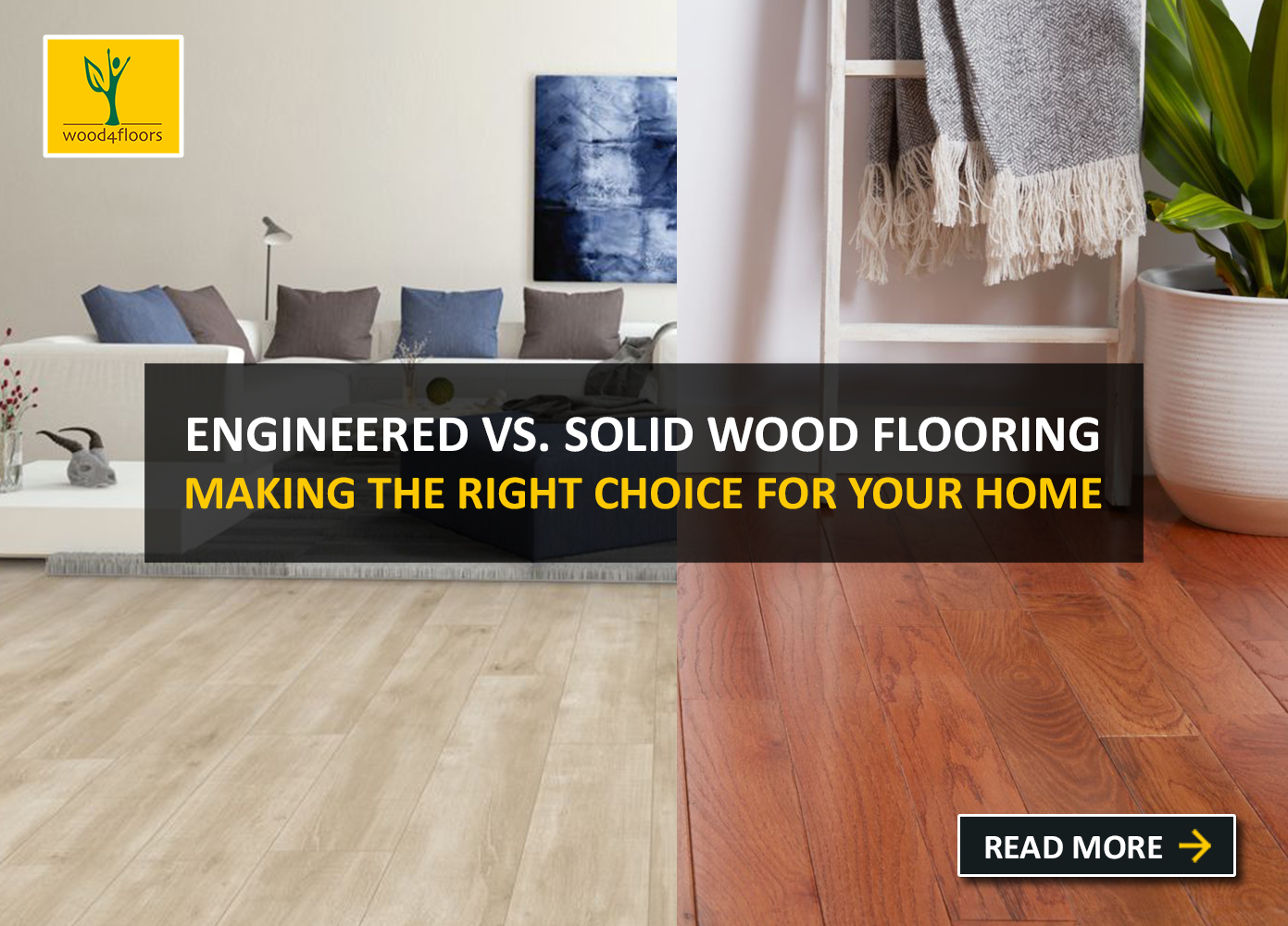Choosing the perfect flooring for your home is a significant decision, and when it comes to wood flooring, two popular options stand out: engineered wood flooring and solid wood flooring. Both have their own unique characteristics and benefits, making the decision a tough one. In this blog post, we’ll compare engineered wood flooring and solid wood flooring, helping you understand their differences and determine which option is right for your home. Let’s dive into the comparison and find the perfect fit for you!
1. Construction and Composition:
The primary distinction between engineered wood flooring and solid wood flooring lies in their construction. Solid wood flooring is crafted entirely from one type of hardwood, offering the authentic beauty and charm of natural timber. On the other hand, engineered wood flooring consists of multiple layers, with a top layer of real hardwood and a core made of plywood or high-density fiberboard (HDF). This layered construction provides added stability and resistance to moisture, making engineered wood a versatile choice for various areas of the home.
2. Stability and Durability:
Engineered wood flooring’s layered construction grants it enhanced stability and durability compared to solid wood flooring. The core layers help to minimize the effects of temperature and humidity changes, reducing the likelihood of expansion, contraction, or warping. Solid wood flooring, while naturally durable, is more susceptible to these changes. Therefore, if you live in an area with high humidity or are considering flooring for a below-grade space, engineered wood flooring may be the better option for you.
3. Installation Options and Versatility:
When it comes to installation, both engineered wood flooring and solid wood flooring offer different options. Solid wood is typically installed using nails or staples and requires a wooden subfloor. Engineered wood flooring, due to its stability, can be installed in various ways, including glue-down, nail-down, or floating installations. This versatility makes engineered wood suitable for installation over concrete slabs or existing floors, broadening the possibilities for your home’s flooring renovation projects.
4. Appearance and Aesthetic Choices:
Solid wood flooring exudes natural beauty and charm, showcasing the unique grain patterns and colors of the selected wood species. Each plank is distinct and brings a touch of authenticity to your space. Engineered wood flooring, with its top layer of real hardwood, offers a similar aesthetic, providing a beautiful appearance that is difficult to distinguish from solid wood. Both options offer a wide range of wood species, finishes, and styles, allowing you to choose the perfect flooring that complements your home’s decor and personal taste.
5. Price and Budget Considerations:
Price is often a determining factor in any flooring decision. Solid wood flooring tends to be more expensive due to the higher cost of solid hardwood throughout the entire plank. Engineered wood flooring, with its layered construction, can offer a more cost-effective alternative while still providing the beauty and durability of real wood. If you have budget constraints but still desire the elegance of hardwood, engineered wood flooring may offer a more affordable solution.
6. Maintenance and Refinishing:
Both engineered wood flooring and solid wood flooring require regular maintenance to keep them looking their best. They should be kept clean and free from moisture and spills. When it comes to refinishing, solid wood flooring generally offers more flexibility as it can be sanded and refinished multiple times, allowing you to rejuvenate its appearance. Engineered wood flooring, depending on the thickness of the top hardwood layer, can also be refinished, but usually less frequently.
Conclusion:
In the comparison between engineered wood flooring and solid wood flooring, each option has its own merits. Engineered wood flooring excels in stability, versatility, and cost-effectiveness, making it a practical choice for various environments. Solid wood flooring offers the timeless beauty and authenticity of natural hardwood, providing an unmatched charm to your home. Consider your specific needs, budget, and aesthetic preferences to determine which flooring option is the right fit for your home. Whether you choose engineered wood flooring or solid wood flooring, both options offer the enduring elegance and warmth that only wood can bring to your living space.


